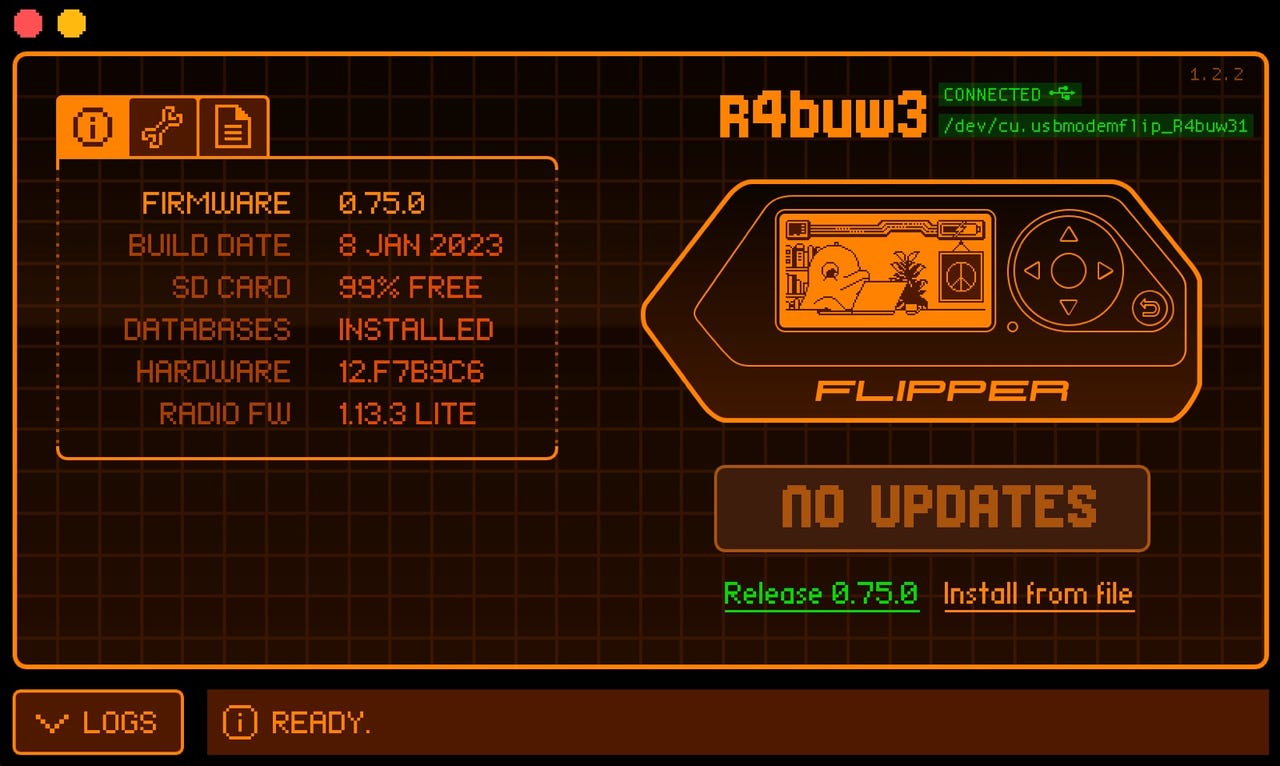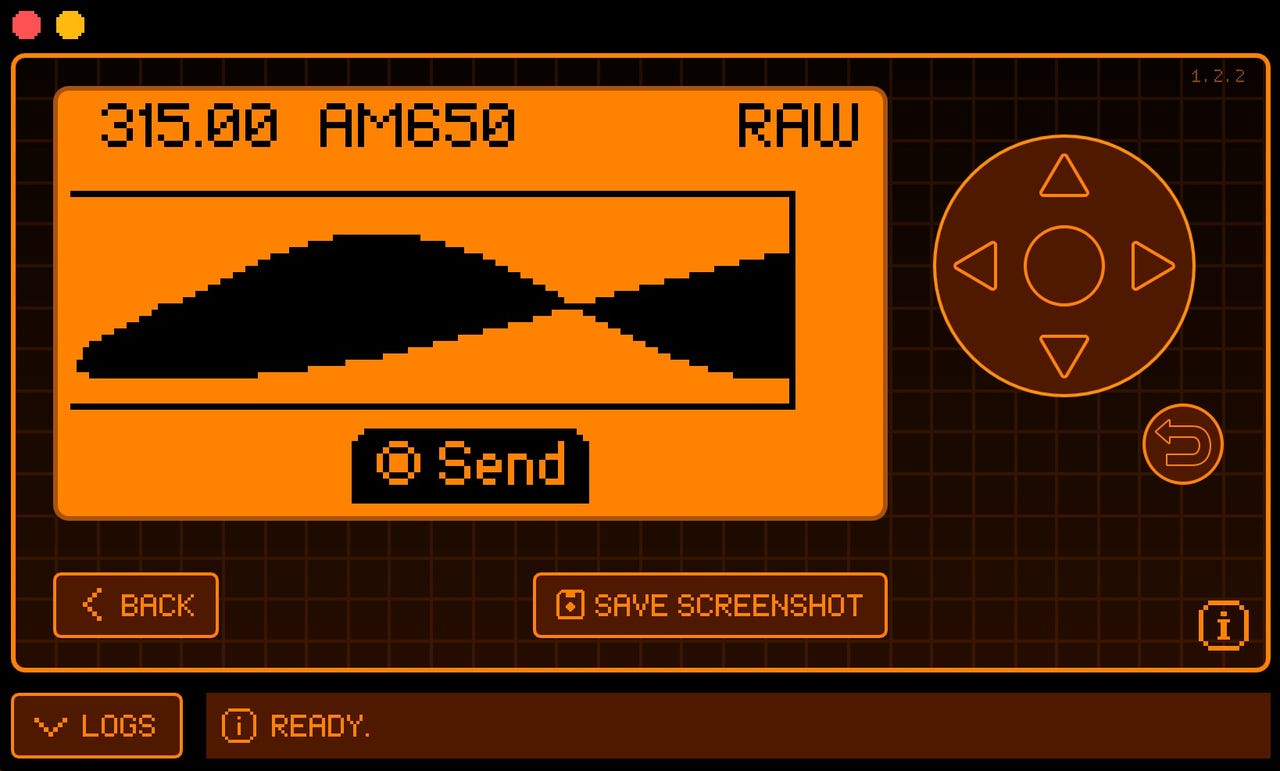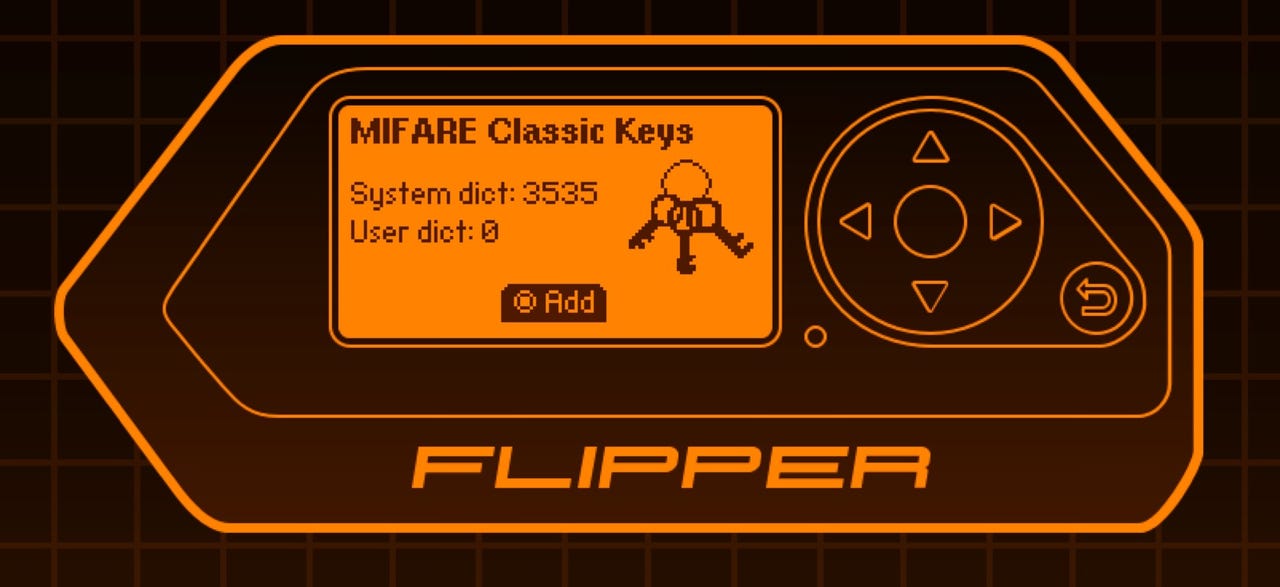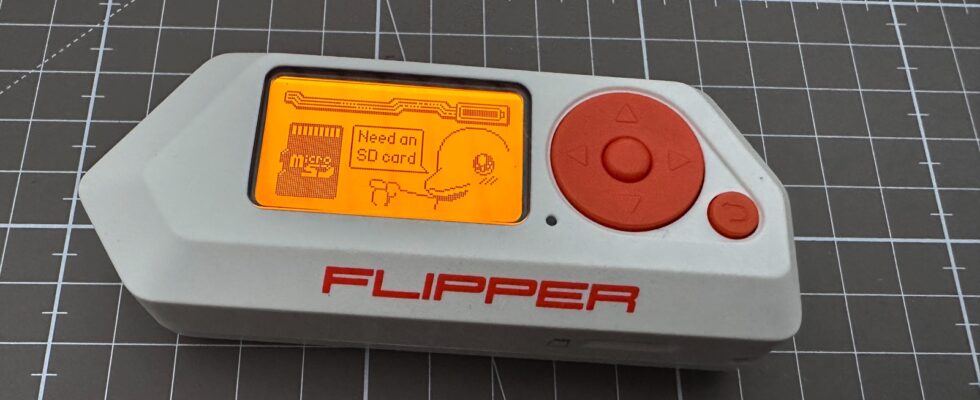Pinball Zero looks like a toy, but underneath that plastic shell is a powerful pentest tool that costs less than $200. Image: Adrian Kingsley-Hughes/ZDNET.
I’ve already had a lot of fun with this hacking and penetration testing tool, a versatile pocket tool that looks like a toy. If you’re not sure what a Pinball Zero is or what it can do, I suggest you read my Pinball Zero introduction and Pinball Zero FAQ first.
I also mentioned before that there is a thriving third-party software ecosystem for the Pinball Zero. What to download and install a number of different firmware for your Pinball Zero. This article has raised many questions that I am now able to answer.
What can a Pinball Zero do?
Right out of the box, the Pinball Zero has many possibilities.
- It has an infrared transceiver that can both capture and transmit infrared codes to control devices such as televisions.
- A sub-GHz wireless antenna can also pick up and transmit wireless codes to operate wireless devices and access control systems, such as garage door remotes, automatic gates, IoT sensors, and even remote keyless systems.
- Pinball Zero can read, store and emulate EM-4100 and HID Prox RFID cards.
- Flipper Zero can also read, write, store and emulate NFC tags.
- On the front side there is a 1-Wire connector which can read and emulate iButton touch keys (aka DS1990A, CYFRAL, Touch Memory or Dallas key).
- Finally, on the top are GPIO connectors that allow the Flipper Zero to connect to other gadgets, like a Wi-Fi development board.
What features can third-party firmware unlock?
Although firmware cannot alter the underlying hardware, it can alter the look, feel, and functionality of Pinball Zero.
For example, it can change the look and feel of the user interface, add a whole host of new presets and features to work with sub-GHz wireless and NFC technologies, add a host of ready-to-use remote controls. use the IR Tool, add new games and apps, fix bugs, and more.
Basically, you can get your Pinball Zero to do more without costing you anything (other than learning how to install firmware).
Can you damage or void your Pinball Zero warranty by updating the firmware?
The manufacturers of Pinball Zero encourage the use of third-party firmware.
Although there is a risk of damaging the device by modifying the configuration files, this cannot happen by installing the firmware.
I’ve been using different Flipper Zero firmware for a few weeks now with no negative effects. The process is robust and reliable.
How do I update the base firmware installed on my Pinball Zero?
If you’re not ready to install custom third-party firmware yet, but want to update the pre-installed firmware, here’s what you need to do.
- Download and install the Flipper Mobile app available for iPhone or Android, or download qFlipper for Windows, macOS or Linux.
- Connect Pinball Zero to your smartphone via Bluetooth, or to your desktop or laptop computer via USB.
- Launch the app, and the home screen will let you know if there are any updates.

qFlipper – no update available for my Pinball Zero. Image: Adrian Kingsley-Hughes/ZDNET.
If I want to try third-party firmware, what do you recommend?
I suggest starting with DarkFlipper Unleashed.
It will get you familiar with the firmware that comes with the Flipper Zero, while adding features – like extending the sub-GHz frequency range by removing geolocation blocks and adding lots of NFC-related features, as well a lot of fun stuff like games.
You have several possibilities which are listed here. I recommend using the Web Updater method which is described in the link – starting by connecting your Pinball Zero to your desktop or laptop computer, or via the iOS/Android app.
There are a lot of new things to explore and it should get you a lot further.
I’ve been using DarkFlipper Unleashed for a while, do you have any other suggestions?
Another very cool third-party firmware I’ve used is Flipper Xtreme. It adds a lot of new things to experiment with, like NFC protocols, an exploit for a hack on a Honda keyless entry device, signal jammers, an improved user interface, and a bunch of bug fixes and optimizations .
The reason I don’t recommend this firmware for those just starting out is that there are things here that could get you in trouble if you don’t know what you’re doing.

Pinball Xtreme in action. Image: Adrian Kingsley-Hughes/ZDNET.
Is Pinball Zero serious equipment?
Yes. It is a tool with built-in sub-GHz wireless capability, able to work with NFC, RFID, IR and GPIO to connect to hardware projects.
That’s a lot for the price at which the Pinball Zero is sold.
But there’s more to Pinball Zero than hardware. It’s also about the learning that comes with it – you’ll download code from GitHub, install firmware, learn what features do, and maybe write your own code.
In short, it is an excellent platform to deepen the technology, and perhaps open doors to your career in security or the administration of computer systems.

Flipper Zero is an affordable way to explore and experience NFC and RFID technologies. Image: Adrian Kingsley-Hughes/ZDNET.
What additional hardware do you suggest for me to start with?
I really like the Wi-Fi development board. It opens up a lot of possibilities for Wi-Fi analysis, paving the way for further learning and projects.
Source: ZDNet.com
